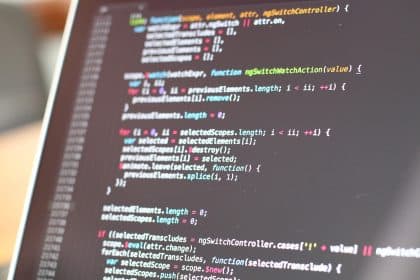Les chatbots alimentés par la technologie GPT suscitent une curiosité mondiale, mais leur intelligence est-elle à la hauteur de notre imagination ? Avec ses capacités …
Chatbot GPT : Est-il vraiment aussi intelligent qu’on le dit ?

Informatique est le son du futur.

Les chatbots alimentés par la technologie GPT suscitent une curiosité mondiale, mais leur intelligence est-elle à la hauteur de notre imagination ? Avec ses capacités …

Ces dernières années, l’intelligence artificielle a aussi influencé le monde visuel. La génération d’image par IA a révolutionné la manière dont les humains créent, éditent …

Votre site mérite de trôner au sommet des recherches Google. Une agence web à Agen vous offre cette proximité stratégique, combinant connaissance du marché local …

À l’ère du digital, l’efficacité professionnelle est sans cesse redéfinie par de nouveaux outils. Pour les utilisateurs Android, une panoplie d’applications promettent d’optimiser temps et …

L’audit SEO local est une analyse approfondie de la présence en ligne d’une entreprise à l’échelle locale. Découvrez comment cet audit permet d’évaluer la visibilité …

Dans le vaste domaine de l’informatique, où les technologies évoluent sans cesse, les entreprises recherchent des solutions sur mesure pour répondre à leurs besoins spécifiques. …

Choisir la bonne carte graphique pour les jeux est une décision cruciale pour tout joueur sur PC. Un processeur graphique puissant améliorera non seulement votre …

En 1996, l’univers coloré des Pokémon est apparu, entraînant des millions de personnes au cœur d’une aventure incroyable. Ainsi, chaque année, une nouvelle nouveauté s’ajoute …

Aujourd’hui, nous allons vous partager des astuces et des techniques pour optimiser vos campagnes publicitaires sur une plateforme de plus en plus incontournable : Pinterest. …

En tant que professionnels du marketing, vous êtes constamment à la recherche de moyens pour optimiser votre temps et vos ressources. L’automatisation marketing est votre …

Etant donné les connaissances très étendues de l’équipe d’une agence web, ses missions sont variées. L’amélioration de la présence en ligne d’une entreprise fait partie …

La configuration gamer est un mécanisme que l’on met en place dans un PC de jeux vidéo pour perfectionner et personnaliser l’expérience des différents jeux. …

Actuellement, l’optimisation du référencement (SEO) est devenue une discipline incontournable. Au cœur de cette pratique se trouve ainsi l’audit SEO. Certes, ce dernier est un …

L’A/B testing est une méthode permettant de tester deux versions d’un élément d’un site web. Le test a pour but de définir la plus performante …

WordPress est l’un des systèmes de gestion de contenu les plus populaires et les plus utilisés dans le monde entier. Que vous soyez un blogueur, …

C’est la première fois que vous allez utiliser le site WordPress dans votre entreprise ? Alors, il est nécessaire que vous ayez quelques bases concernant un …

Dans l’ère numérique d’aujourd’hui, posséder un site web est essentiel pour les entreprises et les particuliers souhaitant se faire remarquer et prospérer en ligne. Cependant, …

Dans notre monde technologique, l’exploitation des systèmes est essentielle. Mais quels sont les meilleurs systèmes d’exploitation actuels ? Quels sont leurs avantages et leurs …

Les entreprises qui souhaitent améliorer leur performance sont confrontées à un défi de taille en ce qui concerne la transformation digitale : comment exploiter …

Au cours des dernières années, les exploits informatiques sont devenus une arme redoutable pour accéder à des systèmes et à des données sensibles. Les …

Vous êtes-vous déjà demandé comment automatiser la création de feuilles de calcul et la gestion financière ? Excel est l’outil idéal pour vous aider …

Alors que les logiciels et l’informatique sont devenus des éléments essentiels de notre monde moderne, le rythme de l’évolution des logiciels est plus rapide …

Vous vous demandez comment créer un réseau LAN filaire entre des ordinateurs ? Il se peut que l’Ethernet soit la solution qu’il vous faut. …

Quelle est la meilleure façon de gérer efficacement une entreprise ? La réponse tient dans un seul mot: ERP. L’acronyme ERP signifie Enterprise Resource …

Les environnements de développement intégrés (IDE) sont les meilleurs alliés des programmeurs – qu’ils soient débutants ou experts. Comme un menu gastronomique de tous …

Vous cherchez à capturer des moments spéciaux, des jeux ou des applications sur votre écran? La barre de jeu Xbox de Windows 10 vous …

Comment conserver votre émail dentaire pour préserver votre santé bucco-dentaire ? L’email est une structure minéralisée qui recouvre la couronne dentaire et joue un …

Roblox est une plateforme qui met à la disposition des milliers de joueurs un outil leur permettant de programmer des jeux. L’outil leur donne également …

Plusieurs utilisateurs d’iOS 6.1 et 6 se disent ne pas être totalement satisfaits des fonctionnalités dont ils jouissent. Il est alors préconisé de le jailbreaker. Il …

La géolocalisation est une technologie qui utilise les données acquises par l’ordinateur ou l’appareil mobile d’un individu pour identifier ou décrire l’emplacement physique réel de …